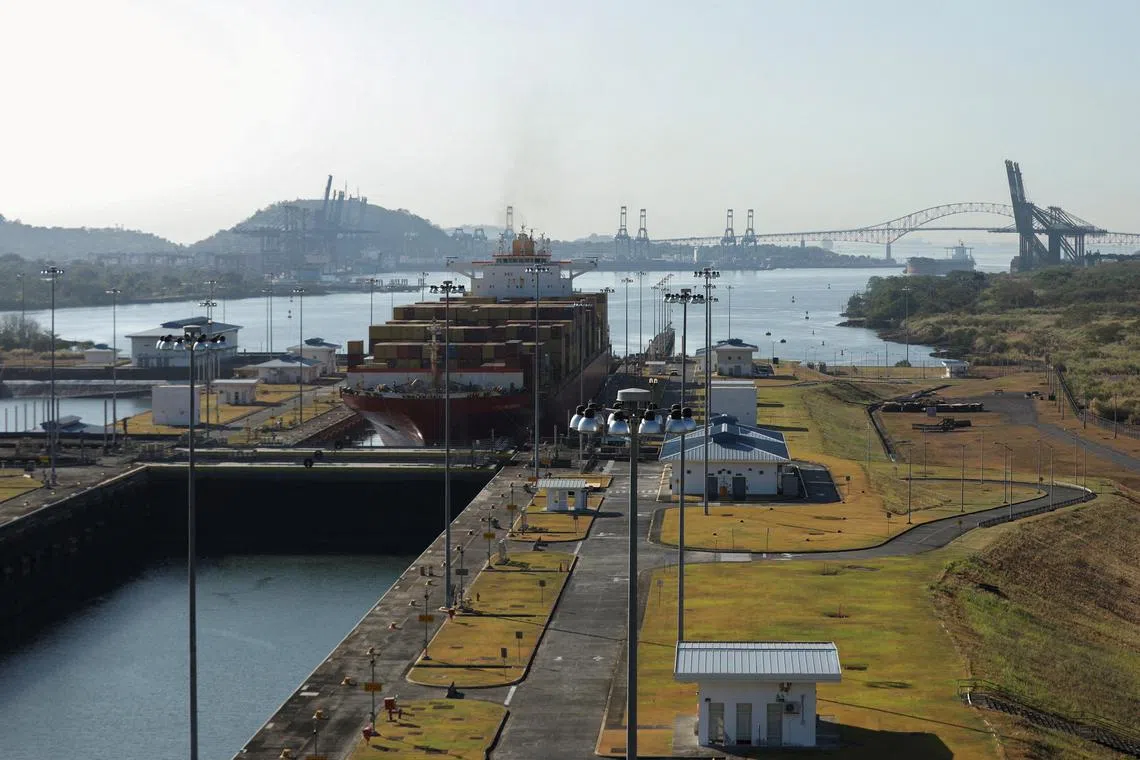Panama Canal to further reduce daily transits if drought continues
Sign up now: Get ST's newsletters delivered to your inbox

A backlog of ships is waiting to transit the Panama Canal, which handles an estimated 5 per cent of world trade.
PHOTO: AFP
Follow topic:
PANAMA CITY - The Panama Canal could further reduce the maximum number of vessel transits authorised per day if a drought that has hit the waterway this year
The canal began restricting vessel draft and authorised daily passage earlier this year to conserve water, which has triggered a backlog of ships waiting to pass
The measures have forced many vessels to lighten cargoes
Up to 32 ships are currently authorised to transit every day, from 36 ships in normal conditions.
Vessel draft was also limited earlier this year to a maximum of 44 feet, from 50 feet.
In a move to ease the bottleneck of ships waiting, the canal has recently changed its reservation system to allow more non-booked vessels to pass and to give priority to the ships waiting the longest.
As of Tuesday, a total of 116 vessels were waiting to pass in Panama, compared with more than 160 in early August, according to official data. The maximum wait time had also reduced to 14 days, from 21 days a month ago.
The head of the Panama Canal Authority, Mr Ricaurte Vasquez, said the waterway would opt for reducing daily transits if needed, before planning any further cut to authorised vessel draft, which affects shippers the most.
“This (El Niño) phenomenon has been very severe this year. We have hot temperatures in the Pacific and the Atlantic simultaneously,” Mr Vasquez told journalists in a briefing.
“We anticipate that in the upcoming months, in the absence of significant rain, we’ll have to be prepared.”
Prolonged drought
Mr Vasquez said that even though this drought has not been the most severe Panama has ever seen, it could be very long.
Water levels at the Gatun Lake, which feeds the waterway, were at 24.2m last week, versus 26.6m for the month of September in recent years.

Even though this drought has not been the most severe Panama has ever seen, it could last for quite a long time.
PHOTO: REUTERS
If the drought extends beyond 12 months, the canal could be forced to change its weather modeling, which could trigger additional restrictions, Mr Vasquez added.
“We do not believe that the canal will suspend operations,” he said.
In the long run, Panama needs modifications in the way water flows to the Gatun Lake to secure enough water for the canal, which uses 190 million litres of fresh water for each ship passing through.
“We are eagerly working with the authorities in order to make an arrangement that leads to the structure of additional reservoirs,” Mr Vasquez said, adding that the proposal, which would require a change in legislation, must be submitted to congress.
Experts have warned about maritime trade disruptions ahead of what is shaping up to be an even drier period next year. They argue that a potential early start to Panama’s dry season and hotter-than-average temperatures could increase evaporation and result in near-record low water levels by April. REUTERS

